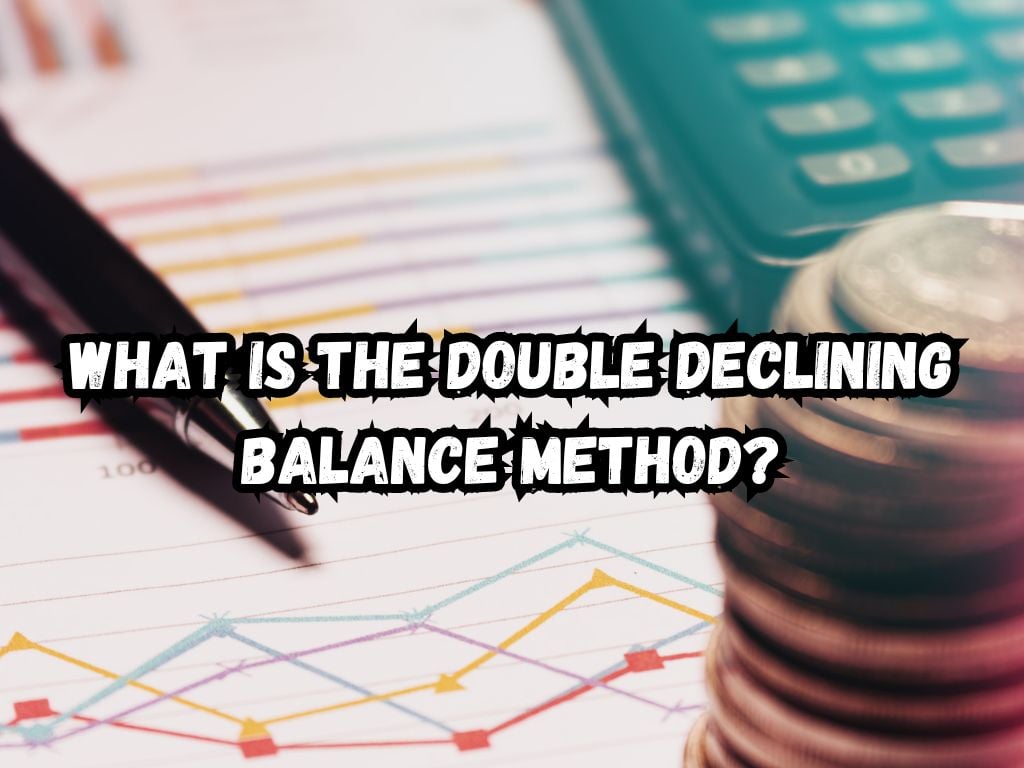In the complex world of accounting, understanding how to manage asset values over time is crucial. Depreciation, the methodical reduction in the recorded cost of a tangible asset, is central in this management.
Among the myriad ways to calculate this decline, the Double Declining Balance Method (DDB) uniquely offers an accelerated depreciation schedule.
This article endeavors to provide a comprehensive understanding of what is the double declining balance method, showcasing its significance in effective asset management and strategic financial planning.
What is the Double Declining Balance Method?
The Double Declining Balance Method stands out as an accelerated technique in the depreciation toolbox. Unlike the straight-line method, which evenly divides an asset’s cost over its useful life, DDB front-loads depreciation.
This methodology recognizes that some assets, like vehicles and technology, lose value more rapidly in their initial years.
The essence of DDB lies in this acknowledgment, setting it apart from linear depreciation methods and tailoring depreciation to match an asset’s real-world wear and tear more closely.
How the Double Declining Balance Method Works
At the core of the DDB method is a distinct calculation process:
Determine the Depreciation Rate: Typically, this rate is double that found in the straight-line method, hence the name. If the straight-line percentage is 20% (reflecting a five-year life span), then the DDB rate would be 40%.
Annual Depreciation Calculation: This involves applying the determined rate to the asset’s remaining book value each year, not its initial cost. It’s important to note that the rate acts on a diminishing value, causing the depreciation expense to decrease over the asset’s life.
Let’s illustrate with an example: Assume a company purchases equipment for $10,000, expected to last five years.
Using DDB, the first year’s depreciation would be $4,000 (40% of $10,000), leaving a book value of $6,000. The next year, the same rate applies to the new book value, resulting in $2,400 in depreciation.

Advantages of the Double Declining Balance Method
The DDB method offers several compelling benefits:
- Rapid Cost Recovery: By accelerating depreciation, companies can recover their investment more quickly through significant early deductions.
- Tax Benefits: The initial years see a drop in taxable income due to higher depreciation expenses, potentially leading to tax savings.
- Financial Statement Impact: Early high depreciation costs can lead to a lower net income on paper, which might be strategic for some businesses.
Disadvantages and Considerations
Despite its advantages, DDB also presents challenges:
- Complex Calculations: DDB demands more elaborate annual calculations compared to simpler methods.
- Asset Suitability: It’s less beneficial for assets whose value doesn’t plummet shortly after purchase.
- Long-Term Financial Impact: The dwindling depreciation expense might not favor long-term financial reporting.
When to Use the Double Declining Balance Method
Consideration of Asset Depreciation Pattern
In the context of asset type, DDB is a preferred method for those assets which lose their value, predominantly in initial years, such as technology appliances or industrial machinery. DDB depreciation matches the actual consumption or usage pattern of these assets.
Preference for Early Tax Breaks
From a business strategy standpoint, DDB can provide significant tax advantages during the early years of an asset’s life due to higher depreciation expenses. Companies preferring early reductions in taxable income may find utilizing the DDB method beneficial.
Approach of Revenue Matching
If a company expects higher initial revenue from the utilization of new assets, selecting DDB for depreciation allows it to match the high early costs with the revenue. This can lead to more credible financial records by correlating expenditure and income timelines accurately.

Frequently Asked Questions
What’s the difference between DDB and straight-line depreciation?
DDB, or Double Declining Balance, employs a consistent rate to the diminishing book value of an asset, which results in ever-decreasing annual depreciation costs. On the other hand, the straight-line depreciation method disperses the cost of an asset in an even manner across its predicted lifespan.
Can the DDB depreciation rate be adjusted?
Typically, the DDB depreciation rate remains stable to maintain its intrinsic accelerated depreciation pattern. Any alterations to this rate could potentially disrupt the effectiveness of the method.
How does DDB depreciation affect tax reporting?
DDB depreciation can potentially offer tax advantages by decreasing net income during the initial years of an asset’s life due to higher depreciation expenses. However, it is strongly advised to consult a tax professional to understand the specific implications this may have on your tax reporting.
Conclusion
The Double Declining Balance Method is a nuanced technique within the accounting and financial management domains.
Providing an accelerated depreciation schedule, it aligns the expense recording closer to the actual decrease in asset value over time.
The method’s early high depreciation charges can be advantageous for certain assets and contexts, though it also brings complexities and considerations.
As part of a comprehensive asset management strategy, the efficacy of DDB warrants deliberate evaluation.


 Tags:
Tags:










